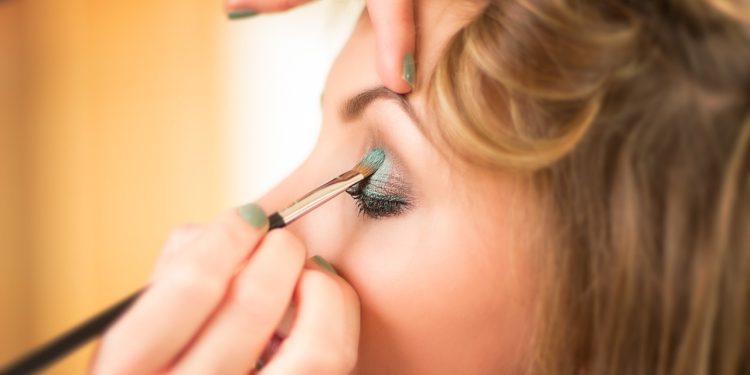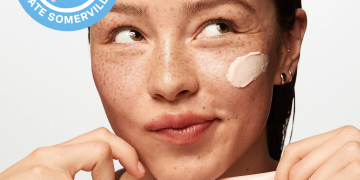Removing makeup is an essential step in maintaining healthy skin, yet it’s often overlooked or done hastily. Improper techniques can lead to clogged pores, irritation, and even long-term damage to the skin barrier. By adopting a gentle and effective makeup removal routine, you can protect your skin while keeping it clean and radiant. This guide covers the best practices for makeup removal, common mistakes to avoid, and tips to maintain a healthy complexion.
Why Proper Makeup Removal Matters
Leaving makeup on overnight or removing it improperly can have serious consequences for your skin:
- Clogged Pores: Residual makeup mixes with oil and debris, leading to blackheads and acne.
- Skin Irritation: Harsh scrubbing or improper products can damage the skin barrier, causing redness and sensitivity.
- Premature Aging: Makeup left on the skin can accelerate the breakdown of collagen, leading to fine lines and wrinkles.
- Eye Irritation: Sleeping with mascara or eyeliner increases the risk of eye infections and lash breakage.
By dedicating time to remove makeup properly, you can prevent these issues and support your skin’s natural repair processes.
Step-by-Step Guide to Removing Makeup Safely
1. Start with a Makeup Remover
Using a dedicated makeup remover ensures that stubborn products like waterproof mascara or long-lasting lipstick are effectively dissolved without excessive scrubbing.
- Micellar Water: Ideal for all skin types, micellar water lifts makeup and impurities gently without requiring rinsing.
- Oil-Based Cleansers: Perfect for heavy makeup, oil cleansers dissolve foundation, sunscreen, and waterproof products.
- Bi-Phase Makeup Removers: These are excellent for removing waterproof eye makeup; the combination of oil and water breaks down tough formulas.
How to Use:
- Apply the product to a cotton pad or reusable makeup cloth.
- Hold it against your skin or eyes for a few seconds to let the formula break down makeup.
- Gently wipe away without rubbing.
2. Double Cleanse
Double cleansing ensures that every trace of makeup, dirt, and oil is removed from your skin. It involves two steps:
- First Cleanse: Use an oil-based cleanser to dissolve makeup and sunscreen.
- Second Cleanse: Follow with a water-based cleanser to clean the skin and remove any remaining residue.
Tips for Double Cleansing:
- Choose gentle, sulfate-free cleansers to avoid stripping the skin.
- Massage the cleanser in circular motions for at least 30 seconds to ensure thorough cleansing.
3. Be Gentle Around the Eyes
The skin around the eyes is delicate and prone to irritation. Avoid tugging or rubbing to prevent redness, fine lines, and lash damage.
How to Remove Eye Makeup Safely:
- Soak a cotton pad with an eye makeup remover.
- Hold it against your closed eye for 10-15 seconds to dissolve the makeup.
- Gently wipe away in a downward motion.
4. Rinse Thoroughly
After cleansing, rinse your face with lukewarm water to remove all product residue. Avoid hot water, as it can dry out the skin and cause irritation.
5. Pat Your Skin Dry
Use a clean, soft towel to pat your face dry. Avoid rubbing, which can irritate the skin and cause micro-tears.
Post-Makeup Removal Skincare Routine
After removing makeup, follow up with skincare to nourish and protect your skin:
1. Apply a Hydrating Toner
Toners help to restore the skin’s pH balance and remove any lingering impurities. Look for soothing ingredients like:
- Aloe vera
- Rose water
- Hyaluronic acid
2. Use a Serum
Target specific skin concerns with serums:
- Vitamin C: Brightens and protects against free radicals.
- Niacinamide: Reduces redness and strengthens the skin barrier.
- Hyaluronic Acid: Provides deep hydration.
3. Moisturize
Lock in hydration with a moisturizer suitable for your skin type. Opt for:
- Lightweight gels for oily skin.
- Rich creams for dry or sensitive skin.
4. Don’t Forget the Eyes
Use an eye cream to hydrate and protect the delicate skin around your eyes. Look for products with peptides or caffeine to reduce puffiness and dark circles.
Common Makeup Removal Mistakes to Avoid
1. Sleeping in Makeup
Even occasional lapses can lead to clogged pores, breakouts, and dull skin. Always remove your makeup before bed.
2. Over-Scrubbing
Harsh scrubbing can damage the skin barrier, leading to redness, irritation, and sensitivity. Stick to gentle wiping motions.
3. Using Harsh Products
Avoid products with alcohol, sulfates, or synthetic fragrances, which can strip the skin and cause dryness.
4. Skipping the Double Cleanse
Relying solely on makeup wipes or one cleanser often leaves behind residue. Double cleansing ensures a thorough clean.
Tools to Simplify Makeup Removal
Investing in the right tools can make makeup removal more efficient and gentle:
- Reusable Makeup Pads: Eco-friendly and gentle on the skin.
- Soft Washcloths: Ideal for wiping away cleansers without irritation.
- Cleansing Brushes: Provide a deeper cleanse for those with heavier makeup.
- Micellar Cleansing Towelettes: Convenient for travel or quick touch-ups.
Tips for Maintaining Healthy Skin
To support your makeup removal routine, adopt habits that promote overall skin health:
1. Use Non-Comedogenic Makeup
Opt for products labeled as non-comedogenic to reduce the risk of clogged pores and breakouts.
2. Keep Your Tools Clean
Wash makeup brushes and sponges regularly to prevent bacteria buildup.
3. Hydrate From Within
Drink plenty of water to maintain skin hydration and elasticity.
4. Take Makeup-Free Days
Allow your skin to breathe by going makeup-free once or twice a week.
Long-Term Benefits of Proper Makeup Removal
Consistently removing makeup with care not only prevents immediate skin issues like breakouts and irritation but also supports long-term skin health. A clean, well-maintained complexion is less prone to premature aging, dryness, and uneven texture. By prioritizing gentle, thorough makeup removal, you can enjoy healthy, glowing skin every day.










